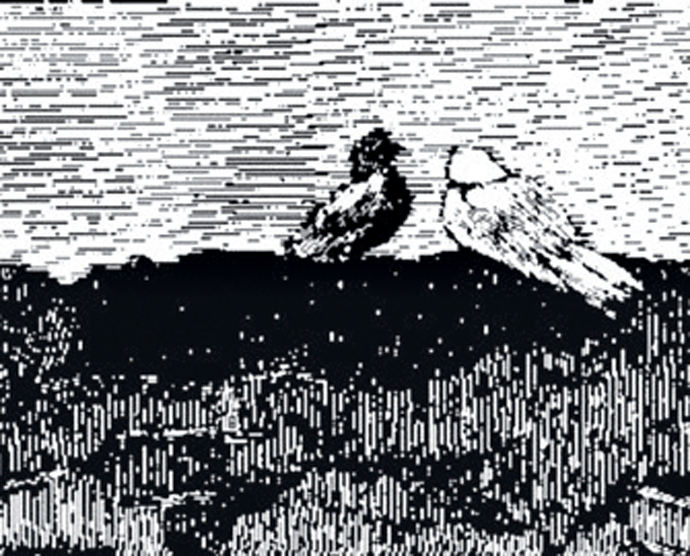Bayview, Texas, the Immigration and Naturalization Service Processing Center. The camp lies well to the north of the Rio Grande, covering 317 acres of the flatlands beside the Gulf of Mexico. At the end of a long skein of narrow unmarked roads it appears abruptly, as if the horizon had parted to reveal the widely separated buildings, partially obliterated by the glare of the sun. Only a small sign identifies the place known as El Corralón, the big corral, the great animal pen, the concentration camp.
Two chain-link fences, topped with barbed wire and separated by a corridor of sand and brown grass, surround the camp. Television cameras watch the corridor and the comers, look into the barracks and the exercise yards; the entire camp is under constant electronic surveillance.
Bright orange jumpsuits identify the prisoners, all the prisoners alike: men and women, Guatemalans, Hondurans, Salvadorans, Nicaraguans (Contras, Sandinistas, Somocistas), young, old, criminals, schoolteachers, drug dealers, union organizers, shopkeepers, peasants. The first rule of El Corralón is the rule of “we” and “they”—the aliens wear orange. Since they all look alike, they appear to be nobody; yet they glow like traffic signs or like ripe fruit among green leaves, so they have no privacy. They are observed but unknown. Aliens.
They come by the busload. And wait. In the bus and then in long lines. Each person’s name becomes a shout, an electronic rumbling on the public-address system, a handle, no longer a name, a thing by which the handler takes hold. They come wearing tennis shoes, T-shirts, blouses still redolent of cooking fires, blue jeans, embroideries. The camp commander says he can tell a person’s country of origin by his clothing. The guards take the clothing away first. Public showers and examinations follow. Each person submits his body for inspection, feels a stranger push and part his hair in search of lice.
Then nothing. The days are given to waiting. Some prisoners clean the barracks, some do the laundry; they work to get through the days. But the days go on too long. It is a prison without sentences; one can post a bond of $1,500 to $3,000 and be discharged in two or three days. But people without money can remain for months and months while the courts consider their appeals for political asylum.

Outside their barracks, two women in orange jumpsuits lay in the dust and dead grass, resting their heads on a concrete walkway. They had been in El Corralón for a long time. One spoke lazily to the camp commander as he walked by, asking about her case. He had no news. He smiled politely. His gleaming boots, the knife crease of his trousers passed within inches of her head.
Trouble comes, the camp commander said, when anxiety takes over. After a hearing before a panel of INS agents, troublemakers are put into isolation cells. They have no right to counsel; there is no due process.
For a few months at the end of 1989, it was INS policy to move people quickly out of El Corralón, releasing them on bond or their own recognizance. The policy changed in the spring when the number of refugees increased. To protect the borders of the United States, the INS said, it would follow a new policy. Releases would stop. Hearings would be speeded up. Big tents, like those used for revival meetings, would be set up on the grounds. The population of El Corralón, which was designed to hold 1,200 adult males and females, would be expanded. The new limit would be 10,000. Crowding, Primo Levi wrote, was one of the useless cruelties of the camps he knew.
From “Borderline Cases,” which appeared in the August 1990 issue of Harper’s Magazine.







































































































